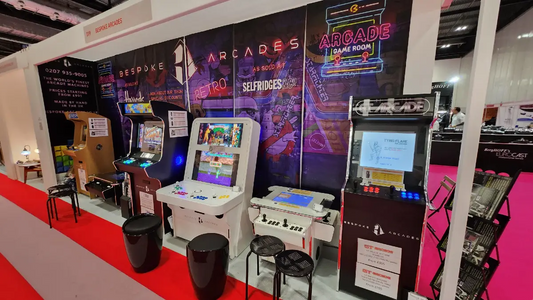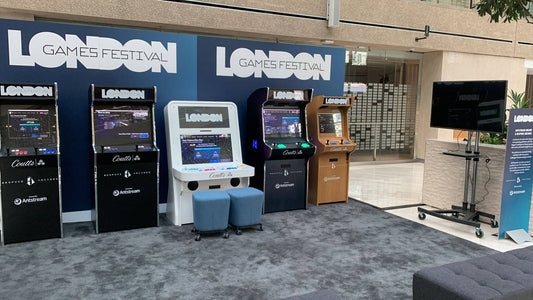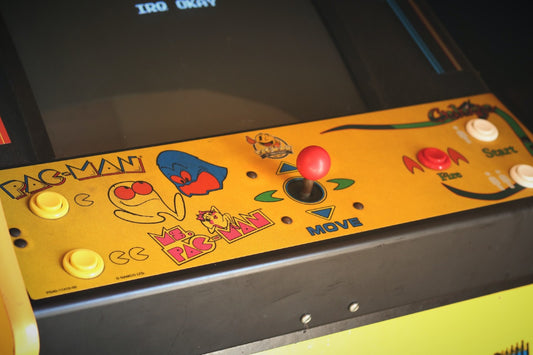Ms Pac-Man and Zaxxon
By 1982, the arcade industry was booming and well into its ‘golden years’. This can be reflected by some of the notable releases of the year, including Ms Pac Man and Donkey Kong JR, which were sequels based on the success of the original arcade machines a few years earlier. However, new and exciting games were released in this year. Including the likes of Dig Dug, Tron and Pole Position.
Zaxxon (1982)
Sega’s Zaxxon is praised as having far more realistic 3D graphics for its time. The game itself was an isometric shooter and was the first to use axonometric projection. The aim of Zaxxon was to hit as many enemy targets whilst flying through the rival’s fortress. The player would attempt to hit as many targets as possible without being shot down or running out of fuel. In terms of controls, the player would have controlled the height of the ship. Though, the gameplay was been criticised for this, some deeming the flying controls too difficult to be able to move forward in the game.
Because of the gameplay of the flying of the ship, Zaxxon included a shadow on the bottom of the screen, as Zaxxon was the first game to use shadows! Although this was not the only ‘first’ that the game introduced. Zaxxon was the first arcade game to advertise through TV, costing $150,000 to be produced by Paramount
The success of the game saw the release of a sequel (Super Zaxxon) and even a board-game based on the gameplay. Furthermore, the game was showcased in the Smithsonian’s ‘The Art of Video Games’ in 2012. Which also contributed to a further Zaxxon game being released as an app on both iOS and android on October 2012.
Ms Pac-Man (1982)
Ms Pac-Man was produced by Bally/ Midway Manufacturing. The game received well and highly praised, becoming the most successful American – produced arcade game (initially selling over 110,000 units).
Pac-Man was famously designed to entice more girls into playing arcade games. Ms Pac-Man is praised for surpassing this through the addition of a female protagonist.
Although a sequel to the 1980 game Pac-Man and following most of the initial gameplay, the game has many differences to the original game. Some of these include:
– Maze design
– Introduction of new mazes in different colour schemes
– Behavioural patterns of ghosts
– Fruits (power-ups) appear randomly across the screen, bounce around the maze and leave through the warp tunnels
– Orange Ghost’s name change from Clyde to Sue
– A new opening theme and ‘death’ sound effect
However, one notable side to Ms Pac-Man is that the maze and all the dots will disappear after the 255th level, making the game unplayable after this event.
An interesting side to Ms Pac-Man is the name changes the game went through within hours of production. The game was set to be called Pac-Woman from the development of the game. Which was later changed to Miss Pac-Man. Within the third act of transitions in the gameplay, Pac man and his wife are seen with a stork giving them a child and in fear of public uproar of the thought of the Pac Man family having a child out of wedlock, Miss Pac-Man was subsequently changed to Mrs Pac-Man. The final change was the transition to Ms Pac-Man as this was decided that this would be easier to roll-off-the-tongue. Pac-Man’s wife having with-stood the majority of these name changes within 72 hours before production.
The success of the game can be seen through its achievement of being a runner up for game of the year 1982. A board game was also created of Ms Pac-Man, with a total of 4 players. One player controlled Ms Pac-Man at a time, with the other three players controlling and trying to catch Ms Pac-Man. Another example of its fame the notable players and owners of cabinets. For example, Michael Jackson famously owned a Midway upright cabinet, which was sold at auction in 2009.



